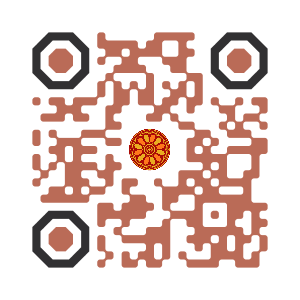
:: International Transaction Journal of Engineering, Management, & Applied Sciences & Technologies
http://TuEngr.com

ISSN 2228-9860
eISSN 1906-9642
CODEN: ITJEA8
FEATURE PEER-REVIEWED ARTICLE
Vol.11(14) (2020)
|
-
MORPHOLOGICAL STUDIES IN THE TREATMENT OF EXPERIMENTAL BURN INJURIES OF THE SECOND AND THIRD DEGREES IN DOGS
 T.N. Shnyakina, N.M. Bezina (Department of Infectious Diseases and Veterinary and Sanitary Expertise, South Ural State Agrarian University, Troitsk, RUSSIA),
T.N. Shnyakina, N.M. Bezina (Department of Infectious Diseases and Veterinary and Sanitary Expertise, South Ural State Agrarian University, Troitsk, RUSSIA),
N.P. Shcherbakov (Innovation Research Center, South Ural State Agrarian University, Troitsk, RUSSIA),
L.V. Chernyshova, T.N. Makarova, I.R. Kanagina (Department of Biology, Ecology, Genetics and Animal Breeding, South Ural State Agrarian University, Troitsk, RUSSIA),
L. V. Medvedeva (Faculty of Veterinary Medicine, Altai State Agrarian University, Barnaul, RUSSIA).
Disciplinary: Biological Science, Veterinary Medicine, Biotechnology.
DOI: 10.14456/ITJEMAST.2020.275
Keywords: Dermis; Thermal burns; Inflammation reaction; Necrosis; Pharmacological mixture; Morphological studies; Regeneration; Granulation tissue.
AbstractThe article presents the results of morphological studies of an effectiveness method in treatment of burn injuries in dogs using pharmacological mixtures (iodinol-chlorophyllipt solution and vinylin-salicylic liniment), taking into account the phase of the wound process. The composition of the iodinol-chlorophylliptic solution includes iodinol, novocaine, a 1% alcohol solution of chlorophyllipt (diluted 1:5 with distilled water) and dimexide. The composition of the vinylin-salicylic liniment includes salicylic acid, vinylin, a 1% alcohol solution of chlorophyllipt (diluted 1:5 with distilled water) and lavender oil. In the first phase of the wound healing process for the treatment of burns in animals of experimental group No. 2, dressings were used, soaked in iodinol-chlorophylliptic solution, and in the second phase of the wound healing process, a vinylin-salicylic liniment was applied to the burn wound. Morphological studies of burnt tissues showed that in both experimental groups in the early stages of observation, the severity of the exudative phase of the inflammatory reaction is less pronounced than in the control group; the number of macrophages, is higher especially in the experimental group No.2. By the 21st day in experimental group No.2, the specific areas of newly formed collagen fibers and blood vessels with significantly lower cellularity of the infiltrate were greater, which indicates earlier maturation of granulation tissue. From the results, the regeneration of damaged tissues in animals of experimental group No.2 occurred with a predominance of reparative processes.Paper ID: 11A14H
Cite this article:
Shnyakina, T.N., Bezina, N.M., Shcherbakov, N.P., Chernyshova, L.V., Makarova, T.N., Kanagina, I.R., Medvedeva, L.V. (2020). MORPHOLOGICAL STUDIES IN THE TREATMENT OF EXPERIMENTAL BURN INJURIES OF THE SECOND AND THIRD DEGREES IN DOGS. International Transaction Journal of Engineering, Management, & Applied Sciences & Technologies, 11(14), 11A14H, 1-11. http://doi.org/10.14456/ITJEMAST.2020.275
References:
Benchamkha, Y., Dhaidah, O., Dahazze, A., Meriem, Q., Elamrani, M.D., and Ettalbi, S. (2017). The bacteriological profile of the burned patients in the center of burns in CHU Mohamed VI Marrakech (about 123 cases). J. Burns Trauma, 7(6), 72-79.
Jacob S., Herndon, D.N., Hawkins, H.K., Enkhbaatar, P., and Cox, R.A. (2017). Xanthine oxidase contributes to sustained airway epithelial oxidative stress after scald burn. J. Burns Trauma, 7(6), 98-106.
Luengo-Pastor, M., Guerrero-Dominguez, R., Navarro Suavarro-Suarez, E., Rasero-Moreno, C. (2019). Intervention to reduce pain in patients with superficial and intermediate second degree burns. Rev Esp Anestesiol Reanim, 66, 172-173. DOI: 10.1016/j.redar.2018.12.001
Kaddoura, I., Abu-Sittah, G., Karamanoukian, R., Papazian, N. (2017). Burn injury: a review of pathophysiology and therapeutic modalities in major burns. Ann Burns Fire Disasters, 30(2), 95-102.
Shnyakina, T.N., Bezina, N.M. (2017). An experimental method for treating burn injury in dogs. Innovative activity in the modernization of the agro-industrial complex: International scientific-practical conference of students, post-graduate students and young scientists, Kursk State Agricultural Academy, 278-281.
Sokolov, V.A., Efimenko, N.A., Admakin, A.L., Petrachkov, S.A., & Stepanchenko, A.A. (2015). Piecetime burns. Sources of danger. Klinicheskaia meditsina, 93(6), 30-35.
Spurr, E.D., & Shakespeare, P.G. (1990). Incidence of hypertrophic scarring in burn-injured children. Burns, 16(3), 179-181.
Vyas, K.S., Wong, L.K. (2013). Oral rehydration solutions for burn management in the field and underdeveloped regions: a review. Int. J. Burns Trauma, 3(3), 130-136.
Other issues:
Vol.11(8)(2020)
Vol.11(7)(2020)
Vol.11(6)(2020)
Vol.11(5)(2020)
Vol.11(4)(2020)
Vol.11(3)(2020)
Vol.11(2)(2020)
Vol.11(1)(2020)
Archives
Call-for-Papers
Call-for-Scientific Papers
Call-for-Research Papers: ITJEMAST invites you to submit high quality papers for full peer-review and possible publication in areas pertaining engineering, science, management and technology, especially interdisciplinary/cross-disciplinary/multidisciplinary subjects.
To publish your work in the next available issue, your manuscripts together with copyright transfer document signed by all authors can be submitted via email to Editor @ TuEngr.com (no space between). (please see all detail from Instructions for Authors)
Publication and peer-reviewed process:
After the peer-review process (4-10 weeks), articles will be on-line published in the available next issue. However, the International Transaction Journal of Engineering, Management, & Applied Sciences & Technologies cannot guarantee the exact publication time as the process may take longer time, subject to peer-review approval and adjustment of the submitted articles.